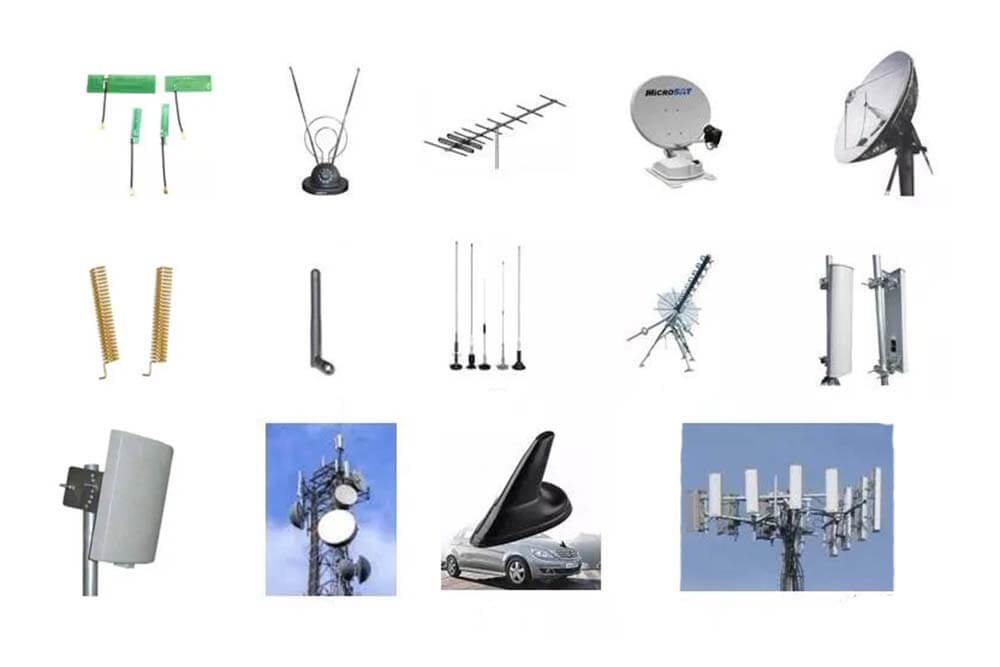
After the read about these 55 different types of antennas, you will learn about the different types of antennas with examples and their use.
As an important part of wireless communication systems, the antenna plays an irreplaceable role. In our life, there are many types of wireless communication requirements, such as long-distance wireless communication, short-distance wireless communication, satellite wireless communication, microwave wireless communication, cell phone wireless communication, point-to-point wireless communication, point-to-face wireless communication, and so on.
Different wireless communications requirements correspond to the use of different types of antenna wireless communication frequency bands, and different wireless communication systems, so it is necessary to use different types of antennas.
The design and selection of different types of antennas are an important part of designing a wireless transceiver for RF systems. A good RF wireless antenna system can make the communication distance the best state. The size of the same type of antenna is proportional to the wavelength of the RF signal. The lower the signal frequency, the larger the antenna needed.
What is an antenna?
The antenna is a kind of transformer, it takes the transmission line propagation of the guided wave, transformed into the unbounded medium (usually free space) in the propagation of electromagnetic waves, or the opposite transformation. A component used in radio equipment to transmit or receive electromagnetic waves.
Radio communication, radio, television, radar, navigation, electronic countermeasures, remote sensing, radio astronomy, and other engineering systems, where the use of electromagnetic waves to transmit information, is dependent on the antenna to work.
What is the reciprocity theorem of the antenna?
In addition, in the use of electromagnetic waves to transmit energy, non-signal energy radiation also need antennas. General antennas are reversible, that is, the same antenna can be used as both a transmitting antenna, can also be used as receiving antenna.
The same antenna as the essential characteristics of transmitting or receiving parameters is the same. This is the reciprocity theorem of the antenna.
What is the same role of different types of antennas?
Antenna radiation is radio waves, receiving radio waves, however, the transmitter through the feed line into the antenna is not radio waves, receiving antenna can not send radio waves directly through the feed line into the receiver, which must go through the energy conversion process.
At the transmitting end, the transmitter generated by the modulated high-frequency oscillation current (energy) through the feeder into the transmitting antenna (the feeder can be different with the frequency and form, direct transmission of current waves or electromagnetic waves), the transmitting antenna will be high-frequency current or guide wave (energy) into radio waves – free electromagnetic waves (energy) to the surrounding space radiation.
At the receiving end, radio waves (energy) through the receiving antenna into high-frequency current or guide wave (energy) are transmitted to the receiver by the feeder equipment.
The antenna is not only a device for radiating and receiving radio waves but also an energy converter, an interface device between the circuit and space.
What is the same working principle for different types of antennas?
When a high-frequency current is applied to a conductor, an electric and magnetic field will be generated in the space around it. According to the distribution characteristics of the electromagnetic field in space, it can be divided into a near area, middle area, and far area. Let R be the distance from a point in space to the conductor, the region at R ≤ λ/2 𝞹 is called the near region, in which the electromagnetic field is closely related to the current and voltage in the conductor.
In R ≥ λ/2 𝞹 region called the far zone, in the region of the electromagnetic field can leave the conductor to space propagation, its change relative to the conductor on the current-voltage to lag for a period of time, when the electromagnetic wave propagated out of the wire has no direct contact with the current, voltage, this region of the electromagnetic field is called the radiation field.
It must be pointed out that when the length of the wire L is much smaller than the wavelength λ, the radiation is very weak; the length of the wire L increase to be comparable with the wavelength, the current on the wire will greatly increase, and thus can form stronger radiation.
A transmitting antenna is the use of a radiation field of this nature so that the transmitted signal through the transmitting antenna can be fully radiated to space.
What is the same gain coefficient of different types of antennas?
The ratio of the total input power of the antenna is called the maximum gain coefficient of the antenna. It is more comprehensive than the antenna directional coefficient to reflect the antenna to the total RF power of the effective use degree. And expressed in decibels. Can use mathematical evidence, the antenna maximum gain coefficient is equal to the antenna directional coefficient and the product of antenna efficiency.
What is the same antenna efficiency of different types of antennas?
Antenna efficiency is the antenna radiation out of the power (that is, the effective conversion of electromagnetic wave part of the power) and the ratio of the active power input to the antenna. It is a constant value of less than 1.
What are the different types of antenna polarization waves?
Electromagnetic wave propagation in space, if the direction of the electric field vector remains fixed or rotates according to certain laws, this electromagnetic wave is called polarization wave, also known as antenna polarization wave, or polarization wave. Usually, it can be divided into plane polarization (including horizontal and vertical polarization), circular polarization, and elliptical polarization.
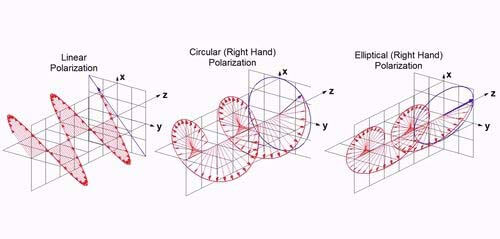
What is the direction of polarization?
The direction of the electric field of a polarized electromagnetic wave is called the direction of polarization.
What is polarization surface?
The plane formed by the polarization direction and the propagation direction of the polarized electromagnetic wave is called the polarization plane.
What is vertical polarization?
For the polarization of radio waves, the earth is often used as the standard surface. Any polarization plane parallel to the earth’s normal plane (vertical plane) is called a vertical polarization wave. Its electric field direction is perpendicular to the earth.
What is horizontal polarization?
Any polarization wave whose polarization plane is perpendicular to the earth’s normal plane is called a horizontal polarization wave. The direction of the electric field is parallel to the earth.
What is plane polarization?
If the polarization direction of the electromagnetic wave remains in a fixed direction, it is called plane polarization, also called line polarization. Plane polarization can be obtained for components of the electric field parallel to the earth (horizontal component) and components perpendicular to the earth’s surface, whose spatial amplitude has an arbitrary relative size. Vertical polarization and horizontal polarization are both special cases of planar polarization.
What is circular Polarization?
When the angle between the polarization plane of a radio wave and the earth normal plane varies periodically from 0 to 360°, i.e., the electric field is constant in size and direction with time, and the trajectory of the end of the electric field vector is projected as a circle in the plane perpendicular to the propagation direction, it is called circular polarization.
Circular polarization can be obtained when the horizontal and vertical components of the electric field are equal in amplitude and differ in phase by 90° or 270°. Circular polarization, if the polarization plane rotates with time and becomes a right spiral relationship with the electromagnetic wave propagation direction, is called right circular polarization; conversely, if it becomes a left spiral relationship, called left circular polarization.
What is elliptical polarization?
If the angle between the radio wave polarization surface and the earth’s normal surface changes periodically from 0 to 2π, and the trajectory of the end of the electric field vector is projected as an ellipse in the plane perpendicular to the direction of propagation, it is called elliptical polarization.
When the amplitude and phase of the vertical and horizontal components of the electric field have arbitrary values (except when the two components are equal), elliptical polarization can be obtained.
The antenna is an essential part of wireless transmission, in addition to the transmission of wired signals we use fiber optics, cables, network cables, etc., and as long as the signal is transmitted in the air using electromagnetic waves, all need various forms of antennas.
In most cases, to expand the coverage of wireless networks, the most direct way is to replace the high-gain antenna or install an external antenna, preferably an omnidirectional or directional antenna.
Different Types of Antenna With Examples
In general, there are many different types of antennas, please see below the various types of antenna examples.
Types of satellite dishes
Ham radio antenna types
Types of dipole antenna
Cell tower antenna types
Types of horn antenna
VHF antenna types
Microwave antenna types
Wireless antenna types
Radio antenna types
Types of the radar antenna
Types of reflector antenna
Satellite antenna types
Types of the wire antenna
4G antenna types
5G antenna types
TV aerial types
Types of antenna used in telecommunication
Broadband antenna types
Types of the loop antenna
Types of the antenna in wireless communication
FPV antenna types
Types of smart antenna
Directional antenna types
Types of microstrip antenna
RFID antenna types
Base station antenna types
Types of parabolic reflector antenna
Wideband antenna types
GNSS antenna types
BTS antenna types
Mobile antenna types
Types of the antenna in mobile communication
UHF antenna types
Reflector antenna types
Types of Antennas in mobile computing
Type of antenna used in mobile phones
Types of the antenna in the communication system
Tower antenna types
Types of antenna used in satellite communication
Walkie talkie antenna type
SDR antenna types
Cellular antenna types
Different types of horn antenna
Types of the omnidirectional antenna
Types of parabolic antenna
High-frequency antenna types
Highly directional antenna types
Horn antenna uses
Types of dish antenna
Access point antenna types
Types of CB antennas
Different types of antennas used in satellite communication
Telecom antenna types
Types of antenna used in radar
Drone antenna types
Network antenna types
Types of antennas used in wireless communication
Mobile phone antenna type
Types of antenna used in mobile communication
Antenna types in the wireless communication system
Bluetooth antenna types
Types of the antenna in satellite communication
Types of antenna used in the base station
Types of monopole antenna
Cell site antenna types
HF radio antenna types
FM antenna types
Types of antennas in wireless communication
Types of military antennas
Type C antenna
Types of helical antenna
UWB antenna types
Broadcast antenna types
Different types of microwave antennas
DAS antenna types
Monopole antenna types
Whip type antenna
Types of antennas on cell towers
Microstrip antenna used in mobile phone
Types of ham antennas
T type antenna
Types of transmitting antenna
AP antenna types
Types of antenna used in microwave communication
Yagi antenna types
Types of plasma antenna
Different types of antennas used in satellite communication
Pole type antenna
Horn type antenna
Cell phone tower antenna types
Sector antenna types
Different types of radio antennas
Different types of reflector antenna
Types of MIMO antenna
Mobile tower antenna types
Parabolic antenna types
Wimax antenna types
Communication antenna types
RFID tag antenna types
L type antenna
Wireless network antenna types
Types of log periodic antenna
Different wifi antenna types
Car aerial types
Dish TB antenna type
UHF radio antenna types
Earth station antenna types
Cell phone antenna types
CB radio antenna types
Type of antenna used in mobile
Types of receiving antenna
Different types of ham radio antennas
Dish satellite antenna types
Cell antenna types
UHF CB antenna types
Most of the antenna types can be found in C&T RF Antennas Inc, China’s leading RF antenna manufacturer.
The antenna can be classified according to different types of antennas and their uses. The following is the basic types of antenna.
1. Different types of antennas are classified by the nature of work
Different types of antennas are classified by the nature of work and can be divided into a transmitting antenna, receiving antenna, and transceiver antenna.
2. Different types of antennas are classified by their uses
Different types of antennas are classified by their uses communication antenna, broadcast antenna, TV antenna, radar antenna, navigation antenna, direction-finding antenna, etc.
3. Different types of antennas are classified by their characteristics
From directional: directional antenna, omni-directional antenna, needle beam antenna, sector beam antenna, etc.
From polarization characteristics: line polarization antenna, circular polarization antenna, and elliptical polarization antenna. Line polarization antenna is divided into vertical polarization and horizontal polarization antenna.
From the frequency band characteristics: narrowband antenna, wideband antenna, an ultra-wideband antenna.
4. Different types of antennas are classified by the current distribution
Different types of antennas are classified by the current distribution there are traveling wave antennas, and standing wave antennas.
5. Different types of antennas are classified by the use of wavelength
Different types of antennas are classified by the use of wavelength there are long wave, ultra-long wave antennas, medium wave antenna, short wave antennas, ultra-short wave antennas, and microwave antennas.
6. Different types of antennas are classified by the carrier
Different types of antennas are classified by the carrier there has car antennas, airborne antennas, star antennas, bullet antennas, etc.
7. Different types of antennas are classified by the antenna shape
Different types of antennas are classified by the antenna shape there are whip antenna, T-shaped antenna, Γ-shaped antenna, V-shaped antenna, diamond antenna, loop antenna, spiral antenna, slot antenna, waveguide gap antenna, horn antenna, reflective surface antenna, yagi antenna, logarithmic period antenna, and array antenna.
Array antenna and have linear array antenna, plane array antenna, attached to some carrier surface of the conformal array antenna, and so on.
8. Different types of antennas are classified by the frequency bands
Different types of antennas with the radio frequencies such as 169MHz antenna, 230MHz antenna, 315MHz antenna, 433MHz antenna, 868MHz antenna, 915MHz antenna, VHF&UHF antenna, Lora antenna, NB-IoT antenna, ADS-B antenna, GSM antenna, GNSS antenna, Wifi 2.4GHz antenna, Wifi 5.8GHz antenna, 2G 3G 4G LTE antenna, GPS antenna, 5G NR antenna, etc.
9. Different types of antennas are classified by the materials
Different types of antennas are classified by the materials there are FPC antennas, PCB antennas, metal sheet antennas, copper antennas, rubber duck antennas, LDS antennas, ceramic antennas, fiberglass antennas, etc.
What are the different types of antennas with different installation methods?
Different types of antennas can be divided into external antennas and internal antennas by the installation location, those installed inside the device are called internal antennas, and those installed outside the device are called external antennas.
For handheld devices, wearable designs, smart homes, and other small-size products, the built-in antenna is commonly used, its integration is high and the product appearance is beautiful. Internet of things and smart hardware products need to be networked to transmit data, so they all need to use antennas.
What is a built-in antenna? What kinds of antennas are included?
Built-in antenna mainly refers to the general term of antenna that can be placed inside the device, built-in antenna mainly includes FPC antenna, PCB antenna, spring antenna, ceramic patch antenna, laser direct molding technology (LDS) antenna, and hardware shrapnel (metal sheet) antenna.
PCB antenna of different types of antennas
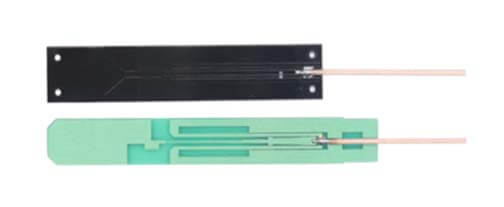
PCB antenna is the part on the PCB for wireless receiving and transmitting.
The antenna is a kind of transducer. When transmitting, it converts the high-frequency current from the transmitter into space electromagnetic waves.
When receiving, it in turn converts the electromagnetic wave intercepted from space into a high-frequency current to send to the receiver. For designing a small power, short-distance wireless transceiver applied in an RF identification system, antenna design is an important part of it.
A good antenna system can make the communication distance reach the best state. There are many kinds of antennas, and different applications need different antennas.
In low-power, short-distance communication systems, a communication reliable and inexpensive antenna system is needed, a PCB antenna is one of the more common ones.
The antenna is a key component of many wireless systems, printed circuit board (PCB) antennas have a wide range of applications in the industry due to their small size and ease of integration with other high-frequency circuits.
PCB antenna structure can be monopole, dipole, slot, patch, and planar inverted F (PIFA).
FPC antenna of different types of antennas
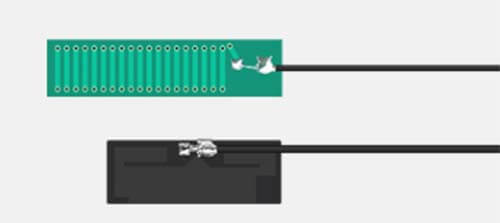
FPC antenna is the design of an antenna line on the flexible PCB board to make an antenna. It is usually used in cell phones and smart hardware products with complex frequency bands.
FPC antenna is characterized by soft material, can be attached to a curved surface, and can also be turned, in space utilization than the metal antenna has the advantage, the FPC antenna until now is still the mainstream antenna technology.
The advantage is suitable for almost all small electronic products and can do more than ten bands of complex antennas like 4G, with good performance and low cost.
The disadvantage is that it needs to be debugged individually for each product.
Spring antenna of different types of antennas
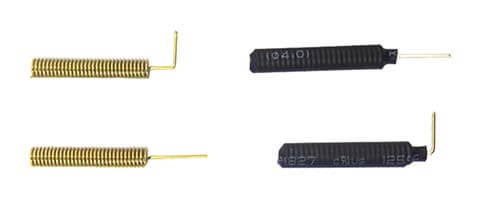
Spring antenna also called the spiral antenna, spring antenna is a kind of helix antenna. Its role is to radiate and receive radio waves.
When transmitting, it converts high-frequency current into the electromagnetic wave; when receiving, it converts electromagnetic wave into the high-frequency current. It plays a very important role in radio communication.
Because the spring antenna is relatively low cost compared with other antennas, small in size, easy to install, good performance of antenna VSWR, and has good anti-vibration and anti-aging ability, therefore, the spring antenna is used more and more widely.
The selection of spring antenna needs to be matched and debugged or custom designed. After purchase we need to weld, if the welding position is different, the actual resonant frequency of the antenna is also different, and it is very likely not the nominal value.
This reflects the importance of antenna quality control and welding consistency control, only by doing so can we ensure the spring antenna reaches a good communication distance.
The ceramic antenna of different types of antennas
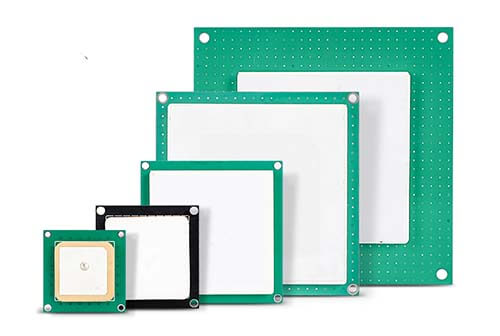
A ceramic antenna generally reads distances up to 2 meters, because its reading distance close to the antenna is also called a close antenna, for indoor use, industrial-grade products, use a ceramic shell, with anti-jamming, lightning, waterproof and dustproof ability.
The ceramic antenna is commonly used in GPS antennas and Bluetooth antennas.
Advantages: It takes up little space and has better performance.
Disadvantages: Hard to do multi-band, so it is difficult to be used in 4G products. High requirements for board headroom, not suitable for particularly compact products.
The types of ceramic antennas are divided into lumped ceramic antennas and multilayer ceramic antennas.
Block antennas use high temperatures to sinter the whole ceramic body once and then print the metal part of the antenna on the surface of the ceramic block.
The multilayer antenna uses the low-temperature co-firing method to tell the multilayer ceramic iterative pressure alignment and then high-temperature sintering, so the antenna metal conductor can be printed on each layer of the ceramic dielectric layer according to the design needs because the ceramic itself dielectric constant is higher than the PCB circuit board, so the ceramic antenna can effectively reduce the antenna size, and can achieve the purpose of hiding the antenna.
LDS antenna of different types of antennas
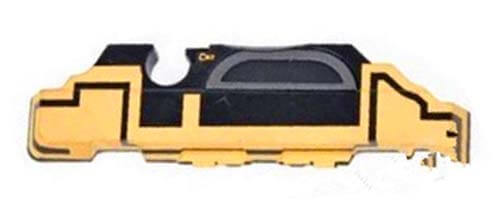
What is the principle of LDS?
Conventional plastic components need to be welded to metal in order to have electrical properties, and it is not easy to make the products tiny and high-precision.
LDS additive can make plastic parts (such as cell phone antennas) have an electrical interconnection function directly after the laser engraving and chemical plating process so that the plastic products can be miniaturized and high precision.
LDS antenna technology, which is a directly laser engraved antenna on a specially treated plastic molded material, this technology is commonly used in current mid- to high-end cell phones, usually used on the main antenna, and speaker box done together to save space.
The LDS antenna is an evolution of the FPC antenna. The space utilization is extremely high.
The steel antenna is stamped out, it must be flat and cannot be stamped out with complicated shapes.
FPC antenna is a whole piece of the plane, although it can be bent, also can not do too complicated.
Advantage: It can make full use of the irregular surface in the three-dimensional space and reduce the size of the antenna.
Disadvantage: expensive. It is twice as expensive as an FPC antenna. And there are many special requirements for the process of the outer surface of the product.
Metal sheet antenna of different types of antennas
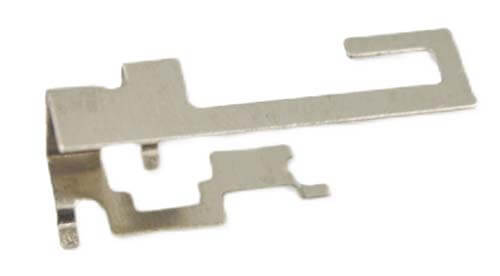
Microstrip patch antenna of different types of antennas
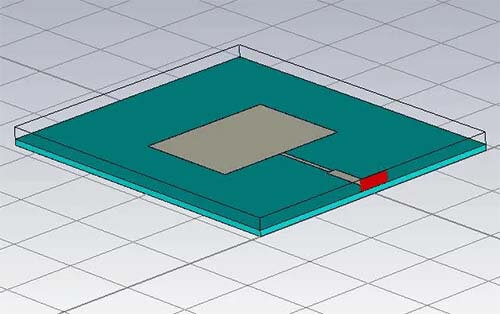
The microstrip patch antenna can be printed directly onto the circuit board. Microstrip antennas are becoming very common in the cell phone market. Microstrip patch antennas are low-cost, small profile, and easy to manufacture.
Microstrip patch antennas are low-cost, small form factor, and are easy to manufacture. It can be made directly on very thin circuit boards of double-layer and multi-layer boards and can be well integrated into cell phones and various miniaturized devices and equipment.
Different types of antennas from the direction of radiation field radiation angle
An external antenna can be divided into the omnidirectional antenna and directional antenna from the different directions of radiation field radiation angle.
What is an Omni-directional antenna?
Omni-directional antenna, that is, in the horizontal direction diagram for 360 ° is uniform radiation, which is usually said to be a directionless non-directional antenna.
In the vertical direction chart for a certain width of the beam, in general, the smaller the width of the flap, the greater the gain. The omni-directional antenna is generally used in a mobile communication system with the station type of suburban county large area system, covering a large area.
The omni-directional antenna radiates or receives electromagnetic waves evenly in all directions, called an undirected antenna, such as a small communication machine with a whip antenna/gum stick antenna, a small base station communication fiberglass antenna, etc.
What is a directional antenna?
A directional antenna is in a particular direction or a particular direction to transmit and receive electromagnetic waves is particularly strong, and in other directions to transmit and receive electromagnetic waves is zero or a very small antenna.
The purpose of using a directional transmitting antenna is to increase the effective utilization of radiation power, and increase confidentiality; the main purpose of using a directional receiving antenna is to increase the anti-interference ability.
Directional antenna in the horizontal direction on the map for a certain angle range radiation, which is usually said to have directional, in the vertical direction on the map for a certain width of the beam, the same as the omnidirectional antenna, the smaller the width of the flap, the greater the gain.
Directional antenna in the mobile communication system is generally used in urban area cell system station type, coverage range is small, user density is large, and high-frequency utilization.
Directional is divided into reflective and directional directional
Reflection type: common have a flat antenna
Directional type: common has yagi antenna and logarithmic period antenna.
External directional antenna mainly includes flat plate antenna, yagi antenna, and logarithmic periodic antenna.
Different types of antennas with different operating bands
Long wave antenna, Medium wave antenna of the different types of antennas
Which is working in the long wave and medium wave band of the transmitting antenna or receiving antenna collectively. Longwave, medium wave to ground wave, and sky wave propagation, and sky wave is continuously reflected in the ionosphere and between the earth.
According to these propagation characteristics, long and medium wave antennae should be able to produce a vertical polarization of the wave. In the long and medium wave antenna, the application of the more widely used vertical, inverted L type, T type, umbrella type vertical grounding antenna. Long and medium-wave antennas should have a good ground network.
Long and medium wave antenna has many technical problems, such as small effective height, small radiation resistance, low efficiency, narrow passband, small directional coefficient, etc. In order to solve these problems, the antenna structure is often very complex and very large.
Short wave antenna of the different types of antennas
Which works in the short wave band of transmitting or receiving antenna, collectively known as short wave antenna. Short wave mainly with the help of the ionosphere reflection of the sky wave propagation, is one of the important means of modern long-range radio communication.
Short-wave antenna form many, which are the most used symmetric antenna, the same phase level antenna, times the wave antenna, angle antennas, V-type antennas, diamond antennas, herringbone antennas, etc.
And long-wave antenna comparison, short-wave antenna effective height, radiation resistance, high efficiency, good directionality, high gain, wide passband.
Ultra-short wave antenna of the different types of antennas
Which works in the ultra-short wave band of the transmitting and receiving antenna called ultra-short wave antenna. Ultra-short waves are mainly by space wave propagation. This antenna has many forms, among which the most used are the yagi antenna, disk cone antenna, double cone antenna, TV transmitting antenna, and so on.
Microwave antenna of different types of antennas
Which works in the meter wave, sub-meter wave, centimeter wave, millimeter wave, and other bands of transmitting or receiving antenna, collectively known as a microwave antenna.
Microwaves are mainly by space wave propagation, in order to increase the communication distance, antennas are erected higher. In the microwave antenna, the wider application of parabolic antenna, horn parabolic antenna, horn antenna, lens antenna, slotted antenna, medium antenna, periscope antenna, etc.
The broadband antenna of different types of antennas
Directionality, impedance, and polarization characteristics in a very wide band almost constant antenna, called broadband antenna. The early broadband antenna has a diamond antenna, V-shaped antenna, times the wave antenna, disk cone antenna, etc., the new broadband antenna has a logarithmic period antenna, etc.
The tuned antenna of the different types of antennas
Only in a very narrow band has a predetermined directional antenna, called a tuned antenna or tuned directional antenna. Usually, tuned antenna only in its tuning frequency near 5% of the band, the direction remains unchanged, and in other frequencies, the direction of change is very strong, order to cause communication is damaged.
The tuned antenna is not suitable for a frequency change of short-wave communication. The same phase horizontal antenna, folded antenna, zigzag antenna, etc. are tuned antennas.
The vertical antenna of the different types of antennas
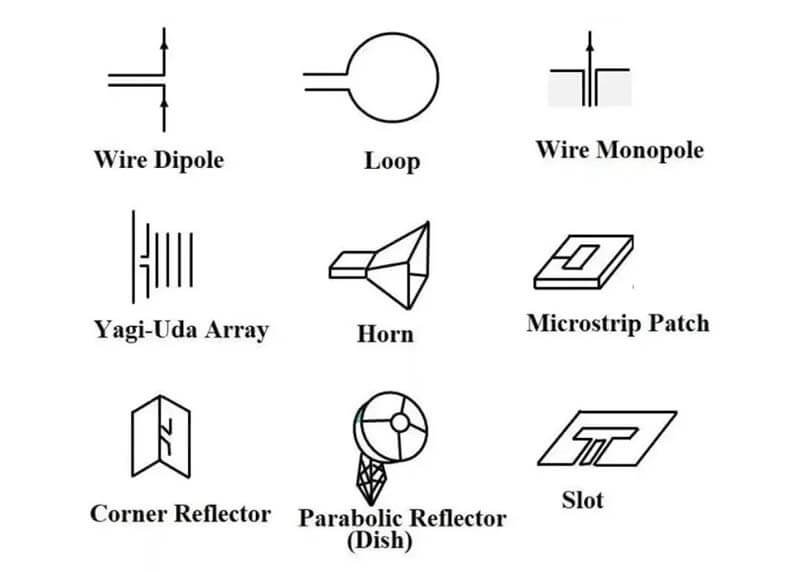
The vertical antenna is an antenna placed vertically with the ground. It has symmetrical and asymmetrical two forms, and the latter is more widely used. The symmetric vertical antenna is often center-fed.
The asymmetric vertical antenna is fed between the bottom of the antenna and the ground, its maximum radiation direction in the case of height less than 1/2 wavelength, is concentrated in the ground directly, so adapted to broadcast. An asymmetric vertical antenna is also called a vertical grounding antenna.
The inverted L antenna of the different types of antennas
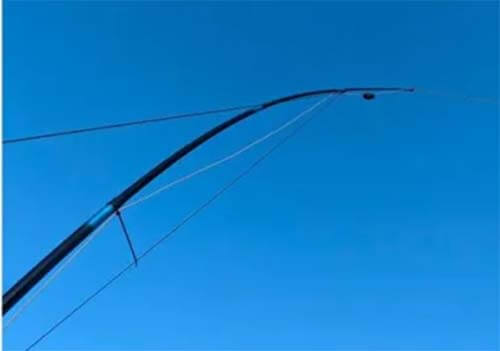
A single horizontal wire end connected to a vertical lead wire constitutes the antenna. Because of its shape like the English letter L backward, it is called an inverted L-shaped antenna.
Russian letter of the word Γ is exactly the English letter L backward. The so-called Γ antenna is more convenient. It is a form of vertical grounding antenna.
In order to improve the efficiency of the antenna, the horizontal part of it can be used at the same level as several wires, the radiation generated by this part can be ignored, and the radiation is the vertical part.
An inverted L antenna is generally used for long-wave communication. Its advantages are simple structure, and ease to set up; its disadvantage is that it covers a large area, and durability is poor.
The type T antenna of the different types of antennas
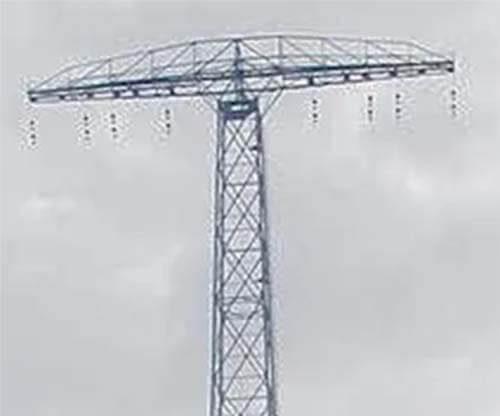
In the center of the horizontal wire, connected to a vertical lead line, the shape of the English letter T, the so-called type T antenna. It is the most common kind of vertical grounded antenna. Its horizontal part of the radiation can be ignored, the radiation is generated by the vertical part.
In order to improve efficiency, the horizontal part can also be composed of multiple wires. the t-shaped antenna features the same as the inverted L-shaped antenna. It is generally used for long-wave and medium-wave communication.
Rubber duck antenna of the different types of antennas
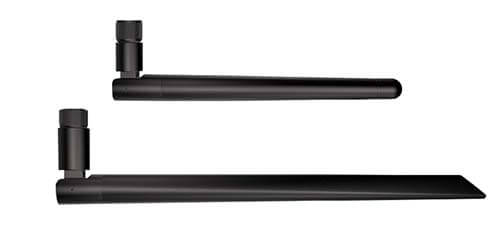
Rubber duck antenna is the most common external omnidirectional antenna, its outer insulation layer is rubber/plastic material, and the internal is usually spiral plus sense metal coil or PCB.
The gain of a rubber duck antenna is moderate and relatively inexpensive, it is often used in wireless communication modules, wireless routing, map/digital transmission radio, etc. The suitable size can be chosen according to the installation space requirement; usually, the longer the length of the same frequency band, the higher the gain.
Magnetic mount antenna of the different types of antennas
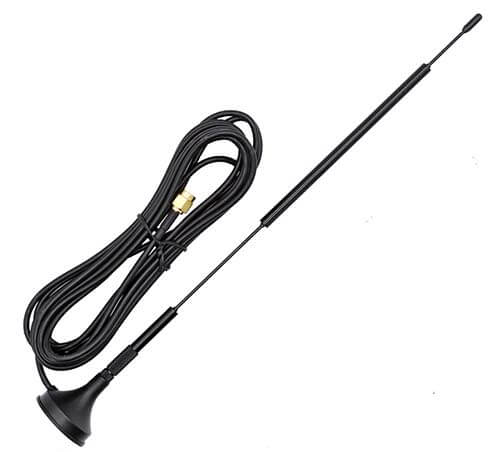
Magnetic mount antenna gain is relatively high, and the biggest feature is with a strong magnetic base mount, installation, and fixing are very convenient, but the magnetic base mount must be adsorbed on the metal surface, in the wireless module industry, magnetic base mount antenna is often used with the wireless module, so as to increase the communication distance of wireless modules, such as smart meter reading, vending machine, courier cabinet, car radio, etc.
Magnetic mount antenna has better and higher efficiency VSWR than the built-in antenna without customization if installed correctly.
Higher gain and longer transmission distance in the same frequency band and structure size as the rubber duck antenna. Different installation positions can be chosen according to the actual use requirements.
In addition to the above advantages, magnetic mount antenna also has a wide range of applications. In addition to the vending machines, courier cabinets, and car radios that we often see, it can also be applied to wireless gateways and wireless modules with medium gain requirements.
When magnetic mount antenna is used in outdoor electric boxes and car vehicles.
When a magnetic base mount antenna is used for the vending machine. The antenna base is a strong magnetic base mount, easy to install, and not easy to fall off.
When a magnetic mount antenna is used for a wireless meter reading. The antenna structure is lightweight and beautiful in appearance.
Through-hole screw mount antenna of the different types of antennas
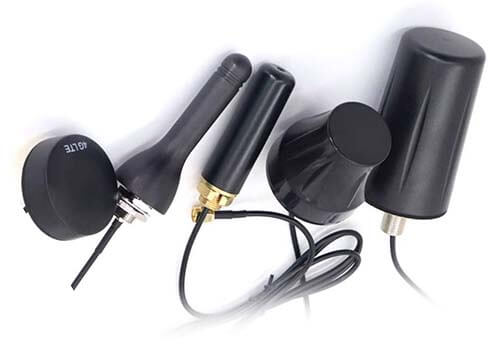
Through-hole screw-mount antenna is a Low-profile antenna Omni-directional screw-mount antenna through-hole antenna bracket antenna for outdoor applications.
Through-hole bolt screw-mount external antenna is ideal for applications requiring high weatherproof and covert installations.
Fiberglass antenna of different types of antennas
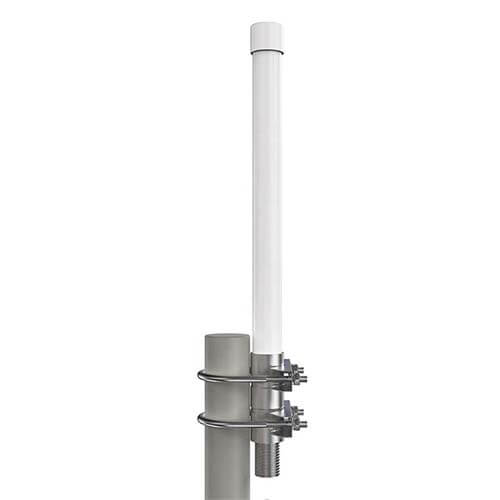
The inner core of the fiberglass antenna is a pure copper oscillator with a balanced feed, which is less affected by the environment; the shell is made of high-quality FRP, which has good corrosion resistance, aging resistance, and windproof performance and is well-adapted to the harsh natural environment.
Fiberglass antenna has excellent performance, with high precision, high efficiency, and high gain, especially suitable for ultra-long distance gateway signal coverage, image transmission, etc. It can be used as a repeater antenna.
In the omnidirectional antenna, fiberglass antenna has the best performance and good adaptation to the harsh natural environment. Especially suitable for ultra-long-distance gateway signal coverage, image transmission, etc.
Dish antenna of the different types of antennas
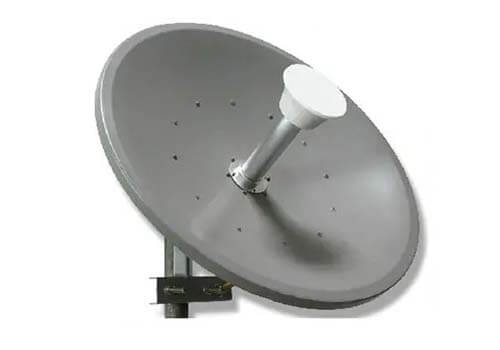
A dish antenna with a large surface space will collect a large amount of signal.
The dish antenna is used as a high gain antenna for point-to-point communications, in applications such as microwave relay links, carrying telephone and TV signals between nearby cities, wireless WAN/LAN for data communications, links for satellite communications, and spacecraft communications antennas. They are also used for radio telescopes. Another major use is for radar antennas.
The umbrella antenna of the different types of antennas

The top of a single vertical wire, led in all directions down a few inclined conductors, so that the shape of the antenna is like an open umbrella, a so-called umbrella antenna.
It is also a form of vertical grounding antenna. Its characteristics and use of an inverted L-shaped, T-shaped antenna are the same.
Whip antenna of the different types of antennas
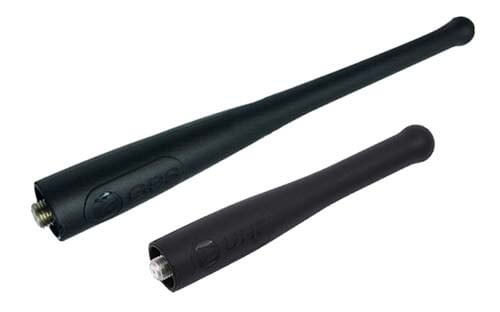
A Whip antenna is a bendable vertical rod antenna, its length is generally 1/4 or 1/2 wavelength. Most of the whip antennas are not ground and ground networks. Small whip antennas often use the small radio station metal shell for the ground network.
Sometimes in order to increase the effective height of the whip antenna, can be added to the top of the whip antenna some small spoke blade or inductor in the middle of the whip antenna. Whip antenna can be used for small communication machines, step talk machines, car radios, etc.
The dipole antenna of the different types of antennas
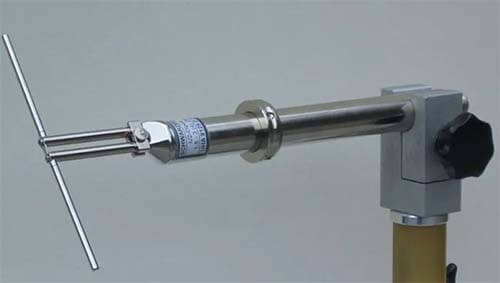
The two parts are of equal length and the center is disconnected and connected to feed the wire, can be used as a transmitting and receiving antenna so the antenna is called a dipole antenna.
Because the antenna is sometimes called the oscillator, so the dipole antenna is also called a symmetric oscillator, or dipole antenna.
The total length of half a wavelength of the symmetric oscillator, called a half-wave oscillator, is also called a half-wave dipole antenna.
It is the most basic unit antenna, also used most widely, many complex antennas are composed of it. Half wave oscillator structure is simple, feed convenient, in the close range communication application more.
Loop antenna of the different types of antennas
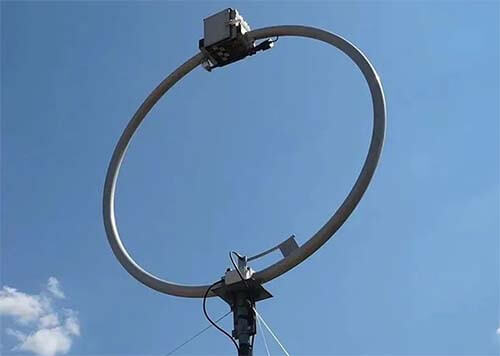
A Loop antenna is a metal wire wound into a certain shape, such as round, square, triangle, etc., with the two ends of the conductor as the output end of the structure. The radiation produced by the loop antenna is comparable to that of a short dipole antenna. Usually used for television and radio frequency identification systems.
Monopole antenna of the different types of antennas
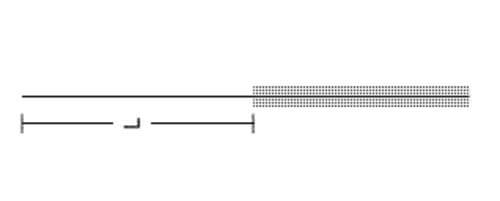
A special dipole antenna is a monopole antenna, i.e., half of a dipole antenna. Narrow application range, foldable. Used for small radios and vehicles.
A monopole antenna is a vertical antenna with a quarter wavelength. The antenna is mounted on a ground plane, which can be either on the actual ground or on the man-made ground such as the body of a piggyback vehicle.
The monopole antenna is fed at the lower endpoint using a coaxial cable, with the ground conductor of the feed line connected to the platform.
In free space, the radiation direction diagram of a quarter-wavelength monopole antenna in the vertical plane is similar to that of a half-wave dipole antenna in the vertical plane, but without subsurface radiation.
In the horizontal plane, the vertical monopole antenna is omnidirectional.
Array antenna of different types of antennas
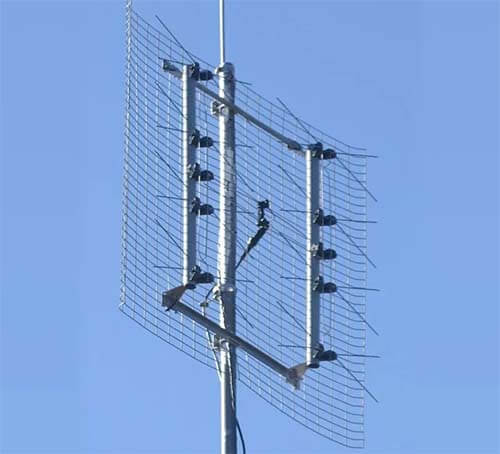
Because the electromagnetic field meets the superposition principle, when the power of a single antenna can not meet the demand, multiple antennas can be used to combine energy to obtain a stronger electromagnetic signal, so that the system works more effectively.
Cage antenna of the different types of antennas
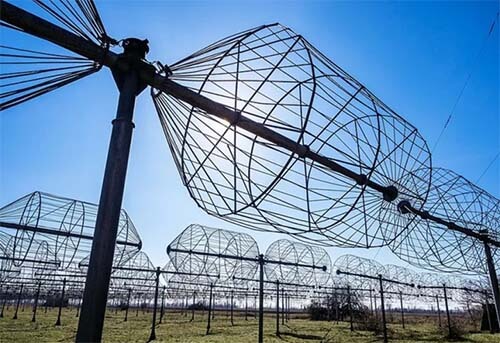
Is it a kind of wide band weak directional antenna? It is a few wires surrounded by a hollow cylinder instead of a symmetric antenna in the single wire radiation body, because the radiation body is cage-shaped, so-called cage antenna.
Cage antenna working band wide, easy to tune. It is adapted to the close range of the trunk line communication.
Corner antenna of the different types of antennas
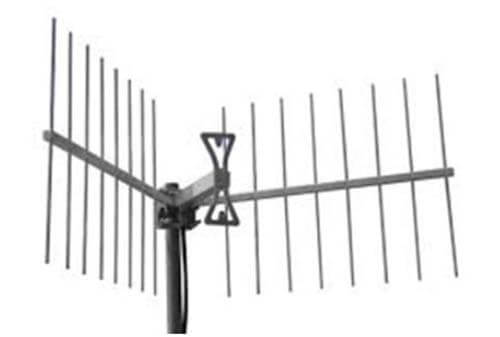
Belong to a class of symmetric antenna, but its two arms are not arranged in a straight line, and 90 ° or 120 ° angle, a so-called corner antenna. This antenna is generally a horizontal device, and its direction is not significant.
In order to get wide band characteristics, corner antenna double arms can also use a cage structure, called a corner cage antenna.
The folded dipole antenna of the different types of antennas
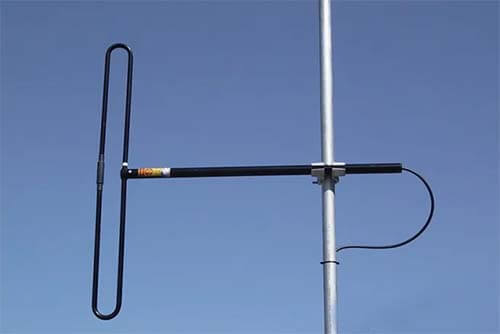
Bend the oscillator into a dipole antenna parallel to each other called folded dipole antenna. There are two-line folded antennas, three-line folded antennas, and multi-line folded antennas in several forms, bending, should make each line on the corresponding point of the current with the phase, from a distance, the whole antenna as a dipole antenna.
But folded dipole antenna and dipole antenna comparison, radiation enhancement. Input impedance increases, easy to couple with the feed line. The folded dipole antenna is a tuned antenna, working frequency is narrow. It is widely used in shortwave and ultra-shortwave bands.
The V-shaped antenna of the different types of antennas
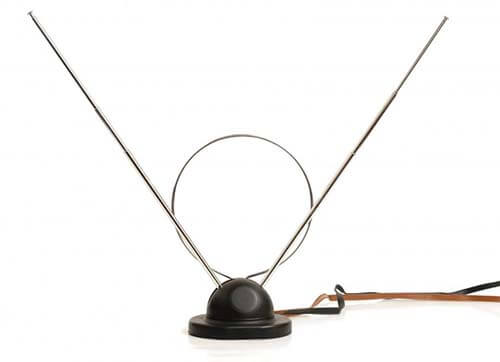
The V-shaped antenna is composed of two wires at an angle to each other, the shape of the letter V like an antenna. Its terminal can be an open circuit, and can also be connected with resistance, the size of the resistance is equal to the characteristic impedance of the antenna.
The V-shaped antenna has a one-way, maximum direction of emission in the direction of the vertical plane of the sub-angle line. Its disadvantage is low efficiency and a large footprint.
Rhombic antenna of the different types of antennas
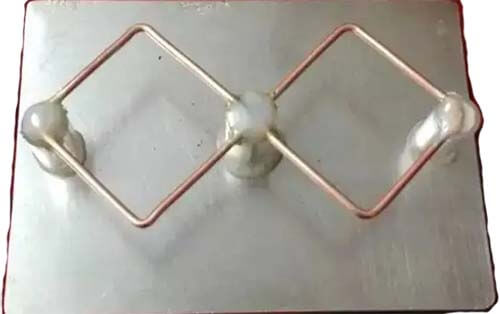
A Rhombic antenna is a kind of broadband antenna. It is composed of a horizontal rhombus suspended in four pillars, a rhombus of an acute angle connected to the feed line, and another acute angle connected to a rhombic antenna with a characteristic impedance equal to the terminal resistance.
In the direction of the terminal resistance in the vertical plane, unidirectional.
The advantage of the rhombic antenna is a high gain, directional, uses a wide band, easy to set up and maintain; the disadvantage is a large footprint. After the deformation of the rhombic antenna, there are double rhombic antenna, back to teach the rhombic antenna, and folded rhombic antenna three forms. Rhombic antenna is generally used for large and medium-sized short-wave receiving radio.
Turnstile antenna of the different types of antennas
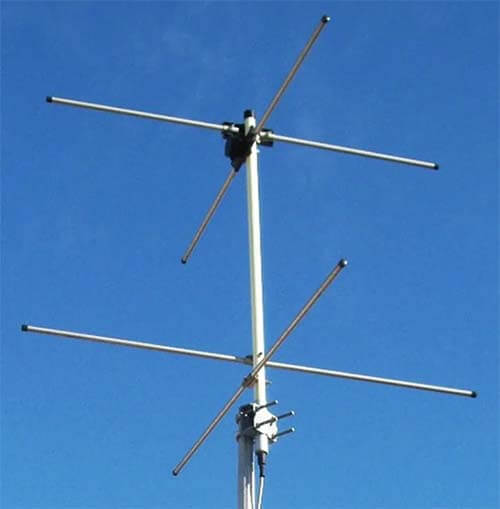
Turnstile antenna is a kind of orthogonal oscillator antenna, that is, by two mutually orthogonal dipole oscillators, the dipole oscillators feed current amplitude equal phase difference of 90 °, also known as the rotating field antenna.
Because the oscillator resembles a bat wing, the so-called turnstile antenna.
Discone antenna of the different types of antennas
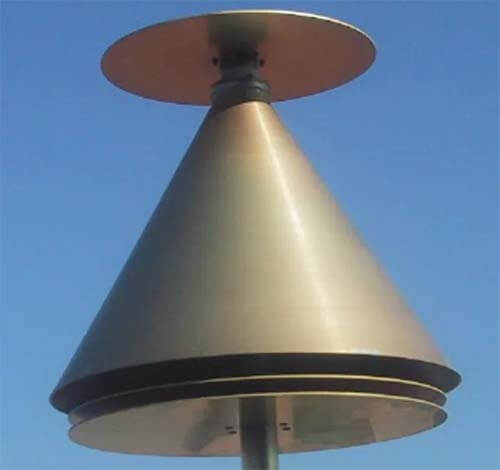
A discone antenna is a kind of ultra-shortwave antenna. The top is a disk (that is, the radiation body), by the heart of the coaxial line feed, and the following is a cone, connected to the outer conductor of the coaxial line.
The role of the cone is similar to the infinite ground, changing the tilt angle of the cone, can change the maximum radiation direction of the antenna. It has an extremely wide frequency band.
Fishbone antenna of the different types of antennas
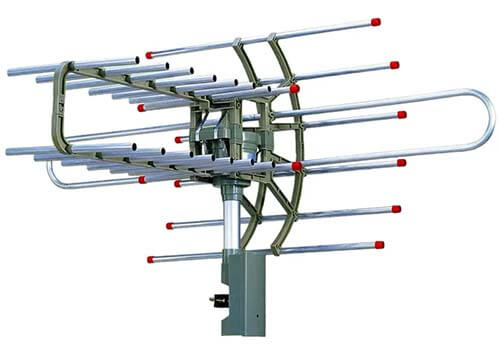
Fishbone antenna also called the herring antenna or bone antenna is a special shortwave receiving antenna. By in two collection lines every certain distance connected to a symmetrical oscillator, these symmetrical oscillators are through a very small capacitor to the collection line.
At the end of the collection line, that is, to the communication direction of one end, connected to a collection line with the characteristic impedance of the resistance equal, the other end is through the feed line to the receiver.
Compared with the diamond antenna, the advantage of the herringbone antenna is a small flap (that is, the main flap direction receiving ability is strong, in other directions receiving weaker), the bone antenna between the mutual influence of small, small area; the disadvantage is low efficiency, installation and use is more complex.
Yagi antenna of the different types of antennas
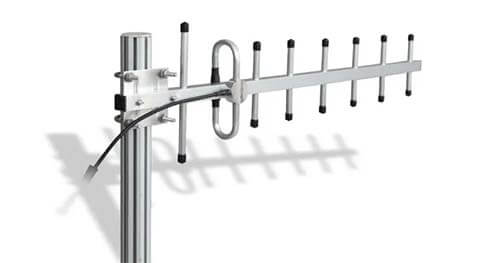
The Yagi antenna is also called the leading antenna or Yagi Uda antenna. It has a few metal rods, one of which is a radiator, a longer radiator for the reflector, and the front of a number shorter is the introducer.
Yagi antenna radiators usually use folded half-wave oscillators. Antenna maximum radiation direction and the direction of the same pointing device.
The advantage of the yagi antenna is its simple structure, light and strong, and ease to feed; the disadvantages are narrow band, and poor anti-interference. In ultra-short-wave communication and radar applications.
Fan antenna of the different types of antennas
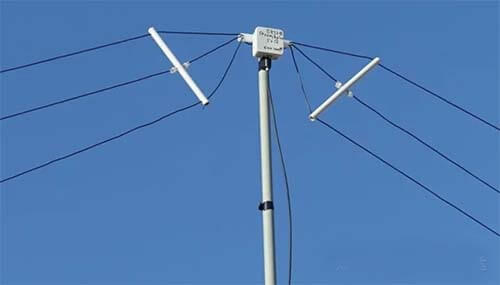
The fan antenna has metal plate types and metal wire type two forms. Among them, is the fan-shaped metal plate type, which is the fan-shaped metal wire type. This sector antenna increases the antenna cross-sectional area and widens the antenna frequency band.
A wire-type fan antenna can be used with three, four, or five metal wires. Fan antenna for ultra-shortwave reception.
Biconical antenna of the different types of antennas
The Biconical antenna consists of two cones top opposite cones, in the cone top feed. Cone can be used on the metal surface, metal wire, or metal network compositions.
Just like the cage antenna, due to the antenna cross-sectional area increasing, the antenna frequency band is also widened. A Biconical antenna is mainly used for ultra-shortwave reception.
The parabolic antenna of the different types of antennas
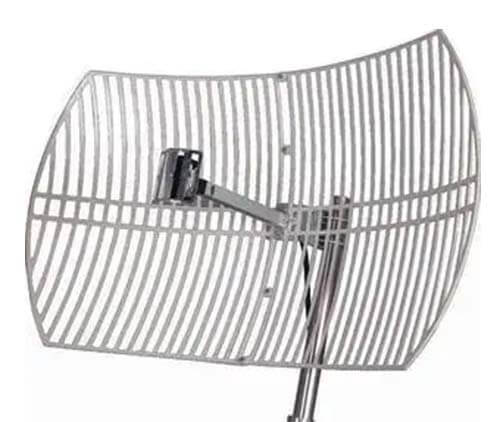
A parabolic antenna is a directional microwave antenna, with a parabolic reflector and radiator, the radiator is installed in the focus of the parabolic reflector or focal axis. The electromagnetic wave from the radiator is reflected by the parabolic surface, forming a highly directional beam.
Parabolic reflectors are made of metal with good conductivity, there are four main ways: rotating paraboloid, column paraboloid, cut-off rotating paraboloid, and elliptical edge paraboloid, the most commonly used is the rotating paraboloid and column paraboloid. The radiator generally uses half wave oscillator, open waveguide, slotted waveguide, and so on.
The parabolic antenna has the advantages of a simple structure, strong directionality, and a wide working band.
The disadvantage is that because the radiator is located in the electric field of the parabolic reflector, thus the reflector has a big reaction to the radiator, the antenna and the feed line are difficult to get a good match; the back radiation is larger; the protection degree is poor; the production accuracy is high. In microwave relay communication, tropospheric scattering communication, radar, and television the widely used in this antenna.
Horn parabolic antenna of the different types of antennas
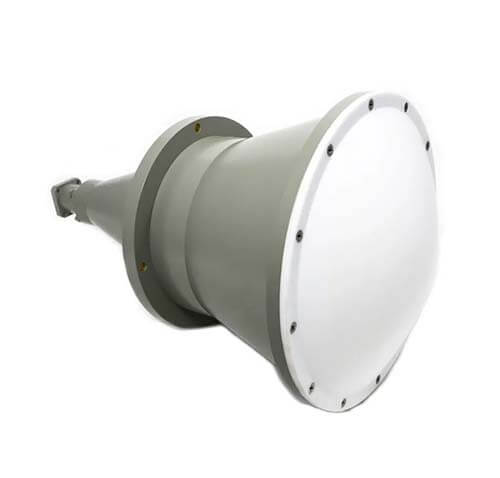
Horn parabolic antenna is composed of two parts: horn and parabolic surface. The parabolic surface is covered by the horn, and the apex of the horn is located on the focal point of the parabolic surface.
The horn is a radiator, which radiates electromagnetic waves to the paraboloid, and the electromagnetic waves are reflected by the paraboloid and focused into a narrow beam to be emitted. The advantage of the horn parabolic antenna is that the reflector has no counter effect on the radiator, the radiator has no blocking effect on the reflected waves, the antenna matches well with the feeder; the back radiation is small; the protection degree is high; the working band is very wide; the structure is simple.
Horn parabolic antenna is widely used in trunk line relay communication.
Horn antenna of the different types of antennas
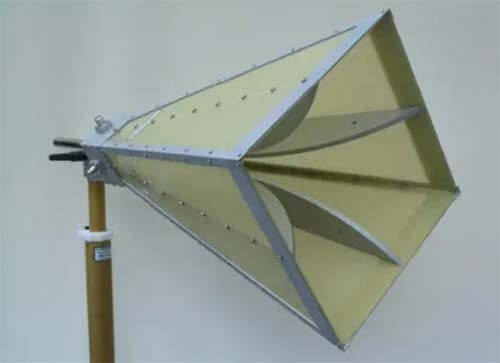
The Horn antenna is also called a horn antenna. It is composed of a uniform waveguide and a section of slowly increasing horn waveguide.
The Horn antenna has three forms: fan-shaped horn antenna, horn cone horn antenna, and conical horn antenna.
A Horn antenna is one of the most commonly used microwave antennas, generally used as a radiator. Its advantage is a wide working band; the disadvantage is larger, and on the same caliber, it is not as sharp as the direction of the parabolic antenna.
Horn lens antenna of the different types of antennas
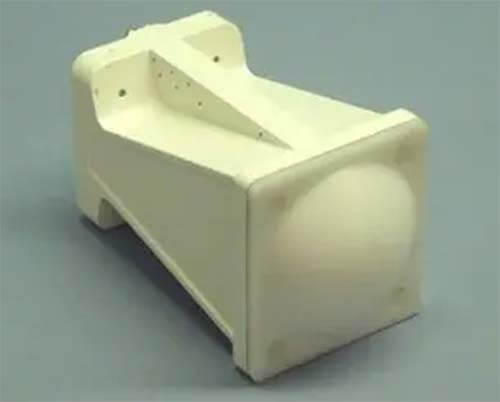
By the horn and installed in the horn caliber on the lens, the so-called horn lens antenna. The principle of the lens see lens antenna, this antenna has a fairly wide band, and higher protection than the parabolic antenna, it is used widely in the number of channels of microwave trunk line communication.
Lens antenna of the different types of antennas
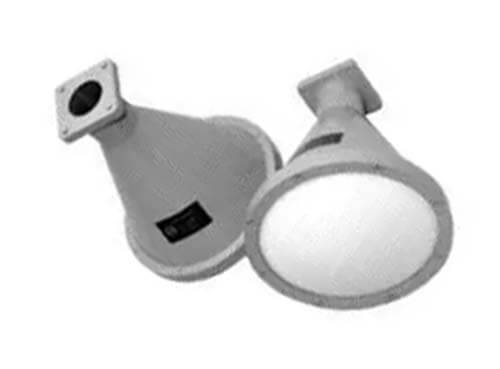
In the centimeter band, many optical principles can be used in the antenna. In optics, the use of lenses can make the point light source placed on the focus of the lens radiation out of the spherical wave, after the refraction of the lens into a plane wave.
Lens antenna is the use of this principle is made. It consists of a lens and the radiator placed on the focal point of the lens.
The lens antenna has a medium deceleration lens antenna and a metal acceleration lens antenna two kinds.
The lens is made of a low-loss high-frequency medium, thick in the middle and thin around. The spherical wave from the radiation source through the medium lens is decelerated. So the spherical wave in the middle part of the lens by the deceleration path is long, and in the surrounding part by the deceleration path is short.
Therefore, the spherical wave through the lens becomes a plane wave, that is, the radiation becomes directional. The lens is made of many metal plates of different lengths placed in parallel. The metal plate is perpendicular to the ground, the closer to the middle of the metal plate, the shorter.
Electric waves in the parallel metal plate propagation are accelerated. The spherical wave from the radiation source through the metal lens, the closer the edge of the lens, the longer the path of acceleration, and in the middle, the path of acceleration will be short. Therefore, after the metal lens, the spherical wave becomes a plane wave.
Lens antenna has the following advantages.
- The side flap and after the flap is small, so the directional map is better.
- The manufacture of the lens is not high precision, so the manufacture is more convenient. The disadvantage is low efficiency, complex structure, and expensive. Lens antenna is used in microwave relay communication.
The slot antenna of the different types of antennas
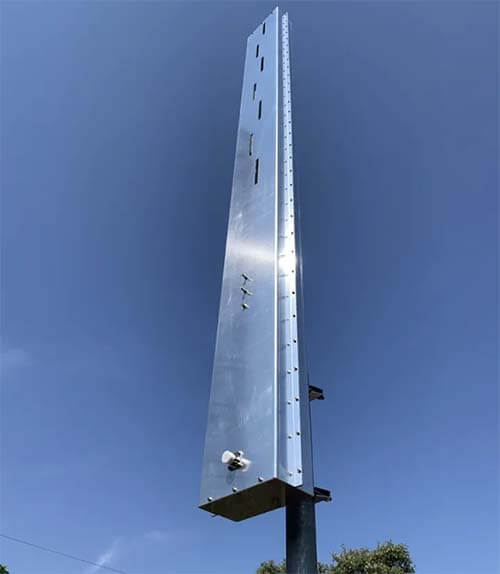
In a large metal plate open a narrow slot or several, with a coaxial line or waveguide feed, so that the antenna is called a slot antenna, also known as a slit antenna.
In order to get one-way radiation, the back of the metal plate is made of the cavity, slotted directly by the waveguide feed.
The slot antenna structure is simple, with no projection, so it is especially suitable for use in high-speed aircraft. Its disadvantage is the tuning difficulty.
The dielectric antenna of the different types of antennas
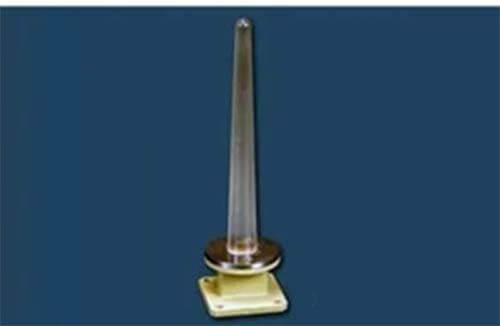
The dielectric antenna is a low-loss high-frequency dielectric material (generally with polystyrene) as a round rod, it is fed by a coaxial line or waveguide at one end.
The advantage of the dielectric antenna is its small size, and directional sharpness; the disadvantage is that the dielectric has a loss, and thus the efficiency is not high.
The periscopic antenna of the different types of antennas
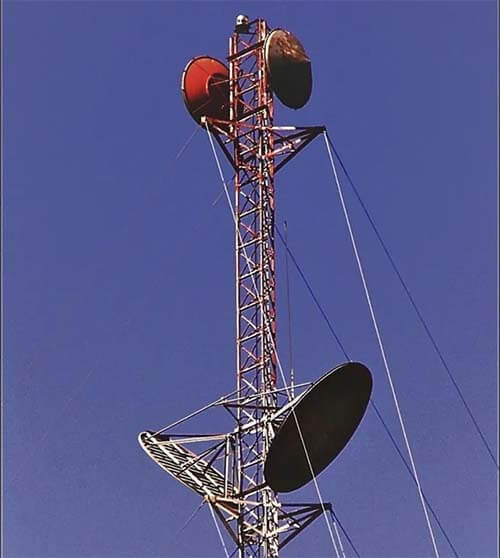
In microwave relay communication, the periscopic antenna is often placed in a very high bracket, therefore, to feed the antenna will have to use a very long feed line.
The feed line is too long will produce many difficulties, such as complex structure, and energy loss, due to the energy reflection at the feed line joints and cause distortion.
In order to overcome these difficulties, a periscope antenna can be used, periscope antenna is placed on the ground by the lower mirror radiator and mounted on the bracket on the mirror reflector.
The lower mirror radiator is generally a parabolic antenna and the upper mirror reflector for the metal plate. The lower mirror radiator emits electromagnetic waves upward after the metal plate is reflected out.
The advantage of the periscopic antenna is small energy loss, small distortion, and high efficiency. The periscopic antenna is mainly used in microwave relay communication of small capacity.
The helix antenna of the different types of antennas
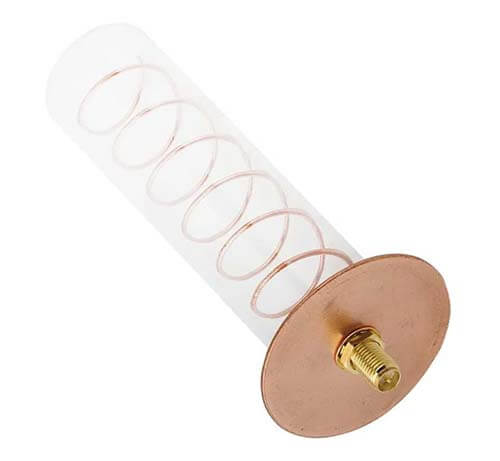
A helix antenna is a kind of antenna with a spiral shape. It is composed of good conductivity of the metal spiral line, usually fed with the coaxial line, the heart of the coaxial line and one end of the spiral line is connected, and the outer conductor of the coaxial line is connected to the grounded metal network (or plate).
The radiation direction of the helix antenna is related to the circumference of the spiral line. When the circumference of the spiral line is much smaller than a wavelength, the strongest direction of radiation is perpendicular to the spiral axis.
When the circumference of the spiral line for a wavelength of the order of magnitude, the strongest radiation appears in the direction of the spiral axis of rotation.
The log period antenna of the different types of antennas

The logarithmic periodic antenna is a non-frequency antenna, the so-called non-frequency is the impedance of the antenna, directional map, gain, VSWR, and other electrical characteristics with the logarithm of the frequency into a periodic change, and in a very wide band to maintain the basic constant.
There are many kinds of log period antennas, logarithmic period dipole antennas and monopole antennas, log period resonant V-shaped antennas, log period helix antennas, and other forms, of which the most common is a log period dipole antenna. These antennas are widely used in shortwaves and shortwaves above the band.
The Bowtie antenna of the different types of antennas
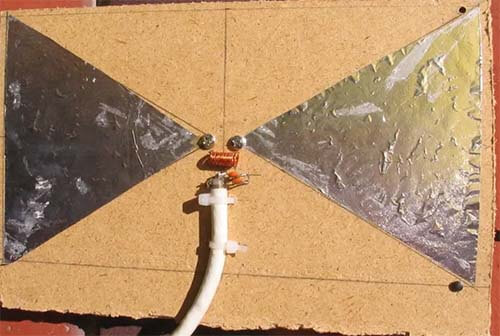
The bowtie antenna looks like a bowtie knot with a butterfly shape, so-called a butterfly antenna.
The concept of a bowtie antenna or butterfly antenna is not very complicated. A butterfly antenna is a common broadband antenna that resembles a two-dimensional tapered dipole. These are butterfly-shaped antennas formed by folded conductive wires, and recently also microstrip ones. Their gain is slightly higher than that of a dipole.
The mast radiator of the different types of antennas
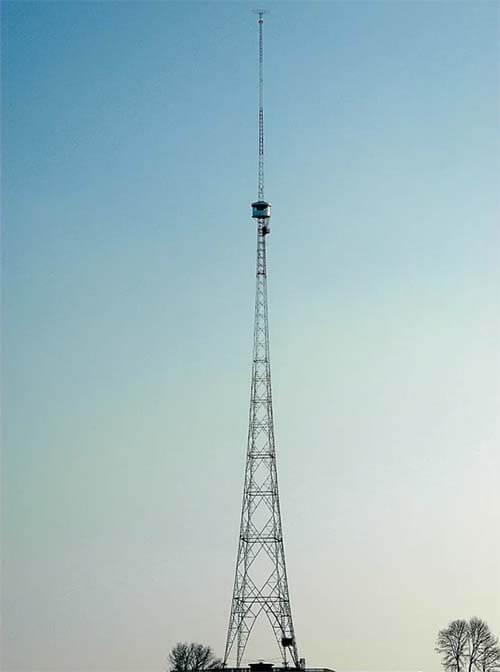
A mast radiator is a radio mast or tower in which the metal structure itself is energized and used as an antenna.
This design was first widely used in the 1930s and was typically used to transmit antennas at low frequencies in the LF and MF bands, especially those used for AM radio broadcast stations. The conductive steel mast is electrically connected to the transmitter.
The base of the Mast radiator is usually mounted on non-conductive support to insulate it from the ground. A mast radiator is a form of monopole antenna.
The antenna tuner of the different types of antennas
Connect the transmitter and the antenna of an impedance-matching network is called the antenna tuner. Antenna input impedance with frequency and a large change, and the transmitter output impedance are certain, if the transmitter and antenna are directly connected, when the transmitter frequency change, the transmitter and antenna impedance between mismatch, will reduce the radiation power.
Using an antenna tuner can make the impedance match between the transmitter and the antenna so that the antenna has the maximum radiated power at any frequency.
An antenna tuner is widely used in terrestrial, vehicle-mounted, naval, and aviation shortwave radio.
Besides this 55 Different Types of Antennas With Examples Used in Wireless Communication article, you may also be interested in the below articles.
4G vs. 5G: What is the difference between 4G and 5G?
How to Choose the Best Antenna for Lora?
